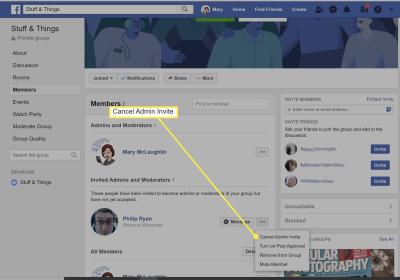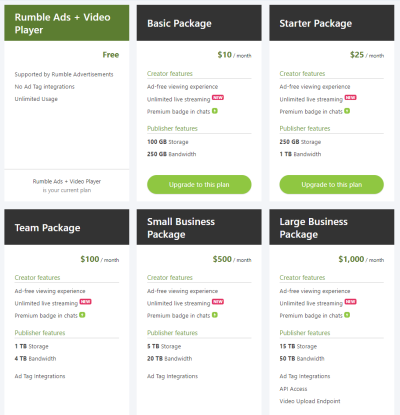Licensing images from
Adobe Stock is a straightforward process, although I do recall feeling a bit daunted during my initial experience. If you've ever been curious about how it all works you're in the company. I anticipated having to maneuver through a maze of regulations but to my relief it proved to be much more uncomplicated.You purchase the license to utilize an image and that's it—you're all set. The image is yours to use, for both personal and commercial projects as long as you adhere to the terms of the license. There's no hidden clauses that will leave you feeling confused.Licensing an image doesn’t grant you ownership. It’s more akin to renting where you pay for the right to use the image for specific purposes while the ownership remains with the artist or creator.
Adobe Stock provides various license options such as standard and extended based on your intended use of the images.
Here are the main takeaways that you should be aware of.
- Standard License: Covers web usage, social media, and print usage up to 500,000 copies.
- Extended License: Offers more freedom, allowing for unlimited print runs and use in products for sale.
- Editorial License: For images that are used for non-commercial purposes, such as news articles.
Once you grasp the concept it becomes quite simple. Believe me, I know what it’s like to navigate through the process gradually. However once you familiarize yourself with the fundamentals it feels almost instinctive.
How to Access Licensed Images on Adobe Stock
Once you’ve obtained a license for an image the next step is to access it. I used to struggle with keeping track of the images I licensed until I got the hang of Adobe Stocks interface. Fortunately once you know where to look finding your licensed images is a breeze. Adobe streamlines the process for you allowing easy retrieval of previously licensed images for multiple uses as needed.
Here’s a guide on how to get to your authorized pictures.
- Log in to your Adobe Stock account.
- Click on the Profile icon in the upper-right corner of the page.
- From the dropdown menu, select License History.
- All your previously licensed images will appear in this section.
- Click on the image you need, and you’ll be able to download it again.
Its comforting to have your licensed images readily available whenever you need them. No more sifting through past emails or folders in search of that specific image you used for a project half a year ago.
Exploring Your Adobe Stock History
Now let me share a personal touch. I’ve licensed so many images that keeping track of them all can be a challenge. That’s why revisiting my
Adobe Stock history has been a real time saver for me. Your license history not saves your images but also provides information about each transaction making it simpler to stay organized.
As you delve into your driving record you will come across
- Date of Purchase: So you can keep tabs on when you licensed specific images.
- Image ID: Handy if you need to reference the image again or share the ID with someone.
- Type of License: Whether it’s standard, extended, or editorial.
If you juggle different projects this timeline serves as a helpful tool to help you recall the visuals you've worked on. Moreover
Adobe Stock ensures that this data is well structured and sorted making it easy for you to locate what you're looking for without any hassle.By taking a look at your license history you can get a comprehensive overview of your creative works. Plus it could serve as a nudge about that unfinished project you have on your plate!
Steps to View Licensed Images in Adobe Stock
Ever found yourself engrossed in a project only to realize you need an image you licensed ages ago? I can relate to that feeling of rummaging through my downloads and folders as if I were pursuing elusive phantoms. Luckily
Adobe Stock offers a hassle free solution to help you locate those images swiftly. It's akin, to having a helper who instinctively knows the whereabouts of everything.
To access the images you have a license for just follow these easy steps.
- Log In: Start by logging into your Adobe Stock account using your credentials.
- Access License History: Navigate to the Profile icon at the top-right corner of the screen and select License History from the dropdown menu.
- Filter and Search: Use the filtering options to narrow down your search. You can filter by date, image type, or license type.
- Select an Image: Click on the image you want to view. You can see details such as the license type and usage rights.
- Download or Reuse: If needed, you can download the image again or view its details for further use.
With these steps organizing your licensed images becomes a walk in the park. Its reassuring to have all your images meticulously organized and readily available whenever you need them. Say goodbye to panicked searches or rummaging through messages!
Managing Your Adobe Stock License History
Keeping tabs on your Adobe Stock license history might not seem thrilling, but believe me, it’s essential. I recall the times when I would lose track of my licenses and find myself with copies. It was quite chaotic! However once I learned to effectively manage my license history everything started to run smoothly.
Here are some tips for keeping track of your Adobe Stock licensing history.
- Regularly Review: Periodically check your License History to keep track of what images you’ve used and where. This helps prevent accidental reuse and keeps your projects organized.
- Organize by Project: Use the notes or tags feature (if available) to label images by project or client. This way, you can quickly find what you need without digging through everything.
- Keep Records: Maintain a personal record of your licenses and their expiration dates (if applicable). It’s a good practice to avoid any surprises.
- Archive Older Images: For images you don’t use frequently, consider archiving them. This keeps your active workspace uncluttered.
By taking care of your license history you can avoid hassles and make your work process smoother. It’s similar to having a tidy toolbox where you can easily find what you need.
Best Practices for Organizing Licensed Images
Keeping track of your images may seem tedious at first, but believe me, it's worth it. I used to dump all my pictures into one massive folder and it was a total mess. But as time went on I discovered that a little bit of order can make a difference. It's kind of like maintaining a clean living space; you know exactly where everything is stored and can locate it without any hassle.
To effectively manage your licensed images consider implementing the following strategies.
- Create a Folder Structure: Divide your images into folders based on categories such as project type, client, or date. For example, have separate folders for “Marketing Materials,” “Social Media,” and “Website Design.”
- Use Descriptive Filenames: Rename your images with descriptive filenames. Instead of “IMG_1234.jpg,” use something like “Summer_Campaign_Logo.png.” It makes searching much easier.
- Apply Tags and Metadata: If your software allows it, add tags or metadata to your images. This can include keywords related to the content, usage rights, and project details.
- Maintain a Catalog: Consider maintaining a digital catalog or spreadsheet with details of each image, including its license type, date of purchase, and intended use. It’s a handy reference.
By implementing these strategies you’ll discover that handling your pictures turns into an easier process rather than a chore. The key lies in establishing a setup that suits your needs allowing you to dedicate more time to creating and less time to searching.
FAQ
When I began my journey with Adobe Stock I found myself grappling with numerous queries that appeared to lack straightforward solutions. However as time went on I managed to unravel the intricacies of the platform and Im eager to share my insights with you. Below are some commonly asked questions that could assist you in navigating Adobe Stocks licensing and image management more effectively.
1. Can I use Adobe Stock images after my subscription ends?
Absolutely, once you’ve obtained a license for the image you can keep using it even if your subscription comes to an end. The rights remain valid unless you have a specific license that imposes certain restrictions.
2. What’s the difference between Standard and Extended licenses?
With the Standard License you can use pictures on your website, social media and in print materials up to 500,000 copies. If you opt for the Extended License you get more flexibility such as unlimited print runs and the ability to use images on products for sale like t shirts or mugs.
3. Can I use Adobe Stock images in products for sale?
Yes, you can use the images in products for sale with an Extended License. However the Standard License doesn’t allow for this, so you’ll have to upgrade to prevent any problems.
4. How many times can I download an image I’ve licensed?
Once you’ve licensed an image you can download it as often as you like. After licensing it you can always find it in your License History without any extra charges.
5. What happens if I accidentally license the same image twice?
I used to experience this frequently! But no need to fret Adobe Stock typically alerts you if you attempt to license an image again. In case you do find yourself with a duplicate you can reach out to customer support for help.
6. Can I transfer a license to someone else?
Regrettably, no. Adobe Stock licenses cannot be transferred which means that only the account that bought the license is allowed to use it.

 admin
admin








